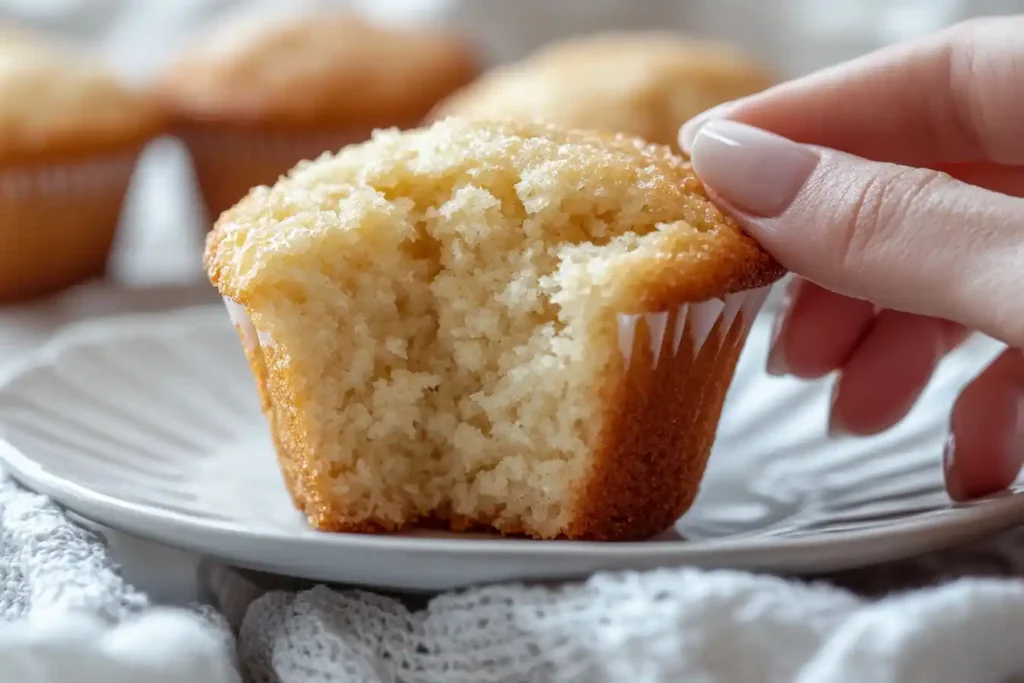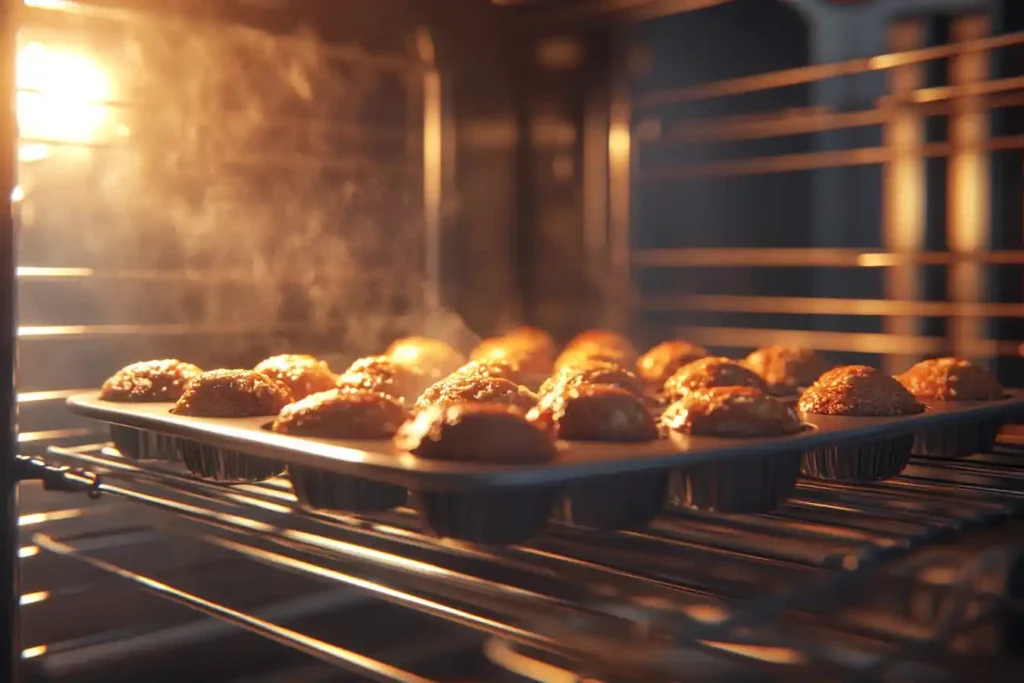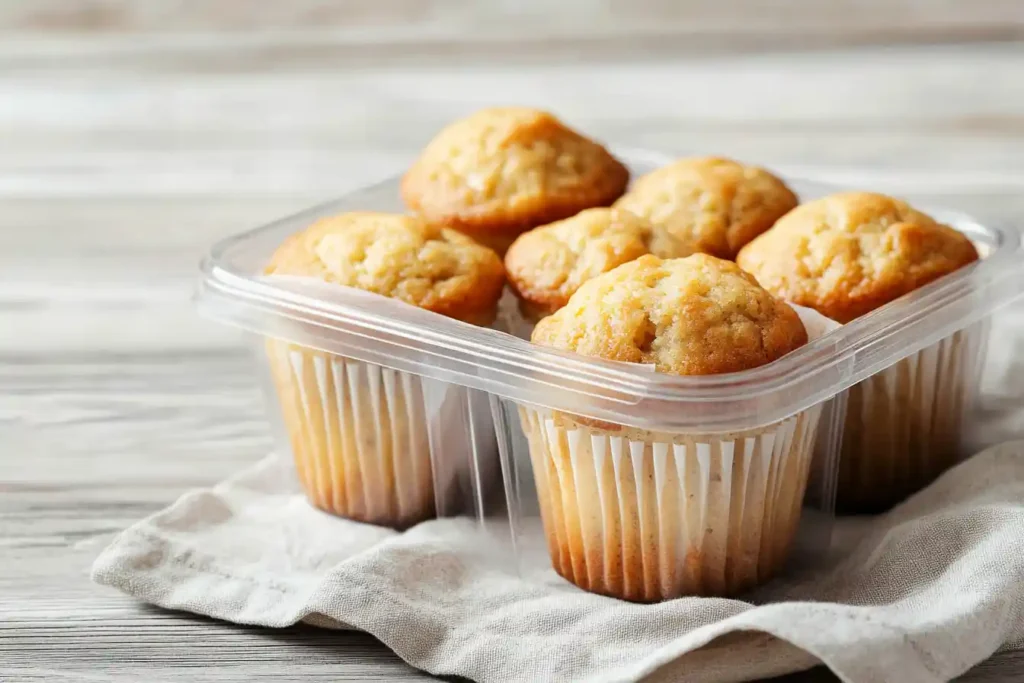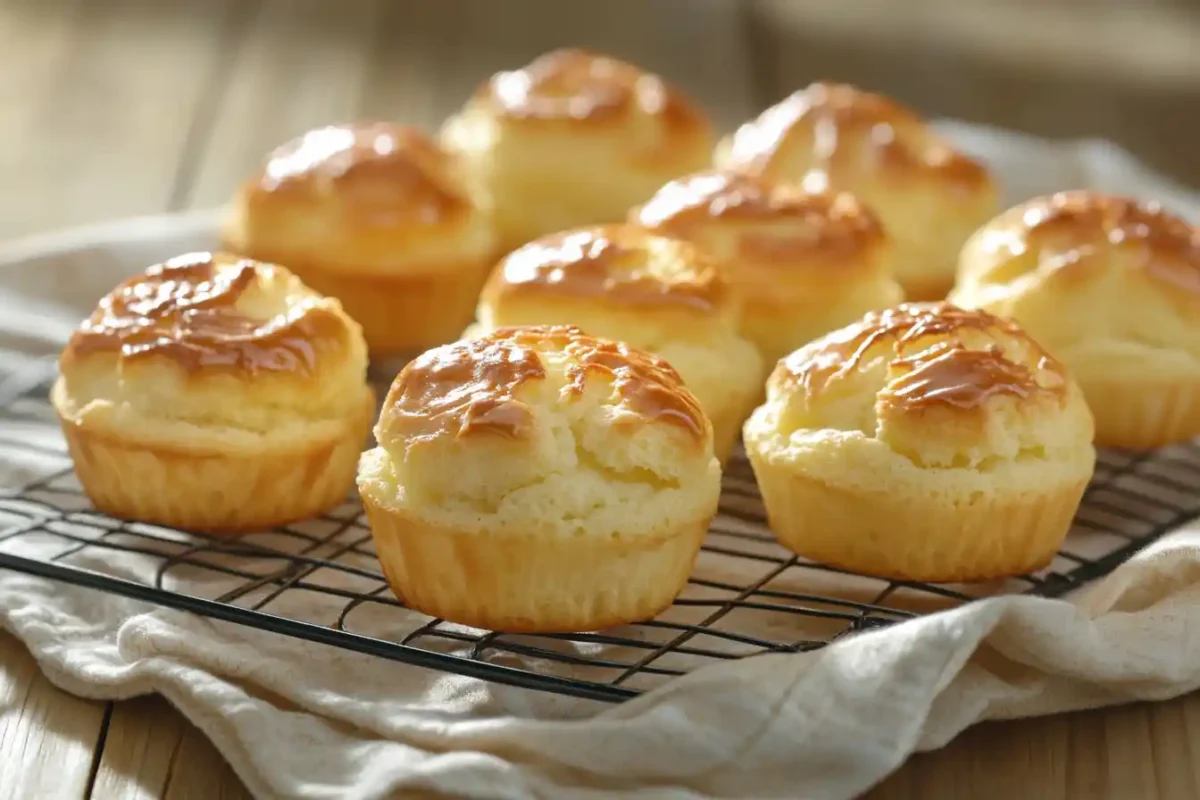Understanding Muffin Moisture
The Role of Moisture in Muffins
Moisture isn’t just about making muffins taste better; it’s a critical factor that defines their texture and shelf life. Dry muffins can ruin a breakfast or snack, while overly soggy ones lose structure. Striking a balance ensures muffins that are tender yet sturdy.
Key Factors Influencing Muffin Moisture
Understanding what makes muffins moist starts with identifying the main players:
- Fats: Ingredients like butter and oil add richness and softness.
- Liquids: Buttermilk, yogurt, or even applesauce boosts hydration while improving texture.
- Sweeteners: Beyond sweetness, sugar and honey attract and hold moisture.
- Mixing Technique: Overmixing develops gluten, which can lead to dry, dense muffins.
By focusing on these elements, you set the stage for muffins that melt in your mouth.
Why Muffins Dry Out
Here are common culprits behind dry muffins:
- Using low-fat substitutes without compensating for lost moisture.
- Overbaking, which zaps moisture from the batter.
- Skipping ingredients like eggs or reducing liquids.
To avoid these issues, precision in measuring and timing is key.
The Texture Test: What Defines a Moist Muffin?

A moist muffin has a slightly tender crumb that springs back when pressed lightly. The exterior shouldn’t crumble excessively, while the inside should retain its softness even after cooling.
Key Ingredients for Moist Muffins
The Role of Fats in Muffin Moisture
When it comes to moist muffins, fats are an irreplaceable ally. They don’t just add richness; they coat flour particles, reducing gluten formation and creating a tender crumb. Here are some common fat choices:
- Butter: Adds flavor and richness but can lead to dryness if overused.
- Oil: A go-to for moist muffins because it stays liquid at room temperature, providing consistent softness.
- Cream Cheese or Sour Cream: These add both fat and a hint of acidity, enhancing the structure while boosting moisture.
Balancing fats is key. Using too little leaves muffins dry, while too much makes them greasy and heavy.
Importance of Liquid Ingredients
Liquids are the backbone of a moist muffin. They hydrate the batter and help dissolve sugars, ensuring a smooth and even crumb. Consider these options:
- Buttermilk or Yogurt: Their tangy acidity reacts with baking soda, creating a lighter texture while keeping muffins moist.
- Milk or Cream: Adds subtle richness but may require complementary ingredients to avoid dryness.
- Non-Dairy Alternatives: Almond milk or coconut milk works well but may need added fat to match their dairy counterparts.
Using the right type and amount of liquid ensures that muffins bake up tender and moist, not dry or overly dense.
Sweeteners and Their Impact on Moisture
Sugar does more than sweeten; it acts as a humectant, pulling in and retaining moisture. Here are some options:
- Granulated Sugar: The most common sweetener, but alone, it can make muffins dry.
- Brown Sugar: Contains molasses, which adds both moisture and depth of flavor.
- Honey or Maple Syrup: These natural sweeteners excel at keeping muffins soft while enhancing taste.
The secret? Combining sweeteners like brown sugar with a drizzle of honey ensures the perfect balance of sweetness and softness.
Eggs: The Unsung Hero of Muffin Moisture
Nutritional Content of Moist Muffins (Per 100g)
| Nutrient | Amount |
|---|---|
| Calories | 290 kcal |
| Protein | 4.5 g |
| Carbohydrates | 38 g |
| Fats | 12 g |
| Fiber | 2 g |
| Sugar | 18 g |
| Sodium | 210 mg |
Eggs do double duty by binding ingredients and contributing moisture. They also provide structure, ensuring the muffins rise without falling apart. For extra moisture:
- Use large eggs for the right liquid balance.
- Add an extra yolk if the recipe calls for it, as yolks are rich in fats.
With these ingredients carefully measured and balanced, you’ll be well on your way to crafting muffins that are as moist as they are delicious.
The Science of Mixing: Achieving the Perfect Batter
Mixing Techniques to Retain Moisture
One of the easiest ways to ruin muffins is by overmixing the batter. When you overmix, gluten develops excessively, making muffins dense and chewy instead of light and moist. Here’s how to avoid it:
- The “Gentle Fold” Method: Gently fold wet and dry ingredients together until just combined. A few streaks of flour are fine!
- Don’t Beat the Eggs Too Much: Whisk eggs just enough to incorporate them without introducing excess air, which can lead to uneven baking.
- Add Liquid Ingredients Gradually: Pouring liquids in stages helps avoid over-saturating the dry ingredients too quickly.
Proper mixing ensures the batter stays airy while evenly distributing moisture.
The Importance of a Well-Distributed Batter
When ingredients aren’t mixed thoroughly, certain areas can end up dry while others are overly moist. Here’s how to achieve uniformity:
- Use a rubber spatula to scrape the bowl sides and bottom.
- Turn the bowl as you mix, ensuring no ingredient pockets are left behind.
- Add mix-ins (like fruit or chocolate chips) toward the end to minimize overmixing.
Why the Order of Ingredients Matters
Following the recipe’s ingredient order is critical for maintaining muffin moisture:
- Mixing wet ingredients first ensures they’re evenly combined before meeting the dry ingredients.
- Gradually adding dry ingredients prevents lumps and overmixing.
- Adding fats last can help lock in the right texture and reduce overworking the gluten.
Avoiding Overmixing Traps
Common overmixing traps include:
- Using a hand or stand mixer at too high a speed. Stick to low speed for delicate batters.
- Mixing too long after adding liquids to dry ingredients. Combine only until you no longer see dry flour.
With these strategies, you’ll avoid dense muffins while enhancing their soft, moist crumb.
Next, we’ll dive into baking techniques that lock in moisture and ensure your muffins come out perfectly every time. Stay tuned!
Baking Techniques to Retain Moisture
Preheating Your Oven: Why It’s Non-Negotiable
Baking muffins in a properly preheated oven is essential for even cooking and moisture retention. Starting with a cold oven can cause muffins to bake unevenly, leaving some parts dry and others undercooked. Always:
- Preheat your oven to the specified temperature.
- Use an oven thermometer to ensure accuracy.
Choosing the Right Baking Temperature
The baking temperature directly impacts moisture. Higher temperatures can quickly set the outer crust, locking in moisture. However, they can also lead to dry edges if left too long. For best results:
- Stick to the recipe’s recommended temperature (usually around 375°F).
- Experiment with slightly lower temperatures if your muffins consistently turn out dry.
Positioning Muffins in the Oven

Where you place your muffin tin in the oven matters:
- Use the center rack for even heat distribution.
- Avoid placing muffins too close to the top, as they may brown before cooking through.
Proper positioning ensures your muffins bake evenly while staying moist.
How to Know When Muffins Are Done
Overbaking is a surefire way to end up with dry muffins. Here’s how to avoid it:
- The Toothpick Test: Insert a toothpick into the center. If it comes out clean or with a few moist crumbs, the muffins are ready.
- Touch Test: Gently press the top of a muffin—it should spring back without leaving an indentation.
Resting Muffins After Baking
Allowing muffins to cool in the tin for 5-10 minutes before transferring them to a wire rack prevents excess moisture loss. Cooling too quickly can make the muffins dry out.
Sealing in Moisture During Baking
Here are some bonus tips:
- Place a shallow pan of water in the oven during baking to create steam, which helps retain moisture.
- Line muffin tins with paper liners to trap moisture and prevent sticking.
Enhancing Moisture with Add-Ins
Using Fruits for Extra Moisture
Fruits are natural moisture boosters that add flavor and texture to muffins. Some excellent options include:
- Bananas: Perfect for banana muffins, mashed bananas add both moisture and sweetness.
- Berries: Blueberries, raspberries, or strawberries bring bursts of juiciness.
- Apples or Applesauce: These provide subtle sweetness while keeping muffins tender.
Be sure to coat fresh or frozen fruits with flour before folding them into the batter to prevent sinking.
Incorporating Vegetables for Unique Moisture
Vegetables might sound unusual, but they’re a fantastic way to enhance muffin moisture:
- Zucchini: Grated zucchini blends seamlessly into batters, keeping muffins soft.
- Carrots: Often used in Morning Glory muffins, shredded carrots add sweetness and moisture.
- Pumpkin: Canned or fresh pumpkin puree creates rich, moist muffins perfect for fall.
Dairy Products as Secret Add-Ins
Adding an extra touch of dairy can elevate moisture levels:
- Sour Cream: Adds tanginess and extra fat for a moist crumb.
- Cream Cheese: Can be swirled into batters for a creamy, moist layer.
- Greek Yogurt: A versatile choice that contributes moisture without adding too much fat.
Surprising Ingredients for Soft Muffins
Some unexpected add-ins work wonders for keeping muffins moist:
- Honey or Maple Syrup: Natural sweeteners that lock in moisture.
- Chia Seeds: When soaked, they create a gel-like texture that helps retain moisture.
- Coconut Oil: Adds a subtle tropical flavor while ensuring a soft texture.
Tips for Balancing Add-Ins
Adding too much of any ingredient can weigh down muffins or throw off the moisture balance. Always:
- Follow recipes closely when experimenting with add-ins.
- Adjust the batter’s liquid and flour ratios if needed.
Common Mistakes Leading to Dry Muffins
Overmixing the Batter
One of the most frequent causes of dry muffins is overmixing. When the batter is overworked, gluten develops excessively, resulting in a tough texture. To avoid this:
- Mix wet and dry ingredients just until combined.
- Stop stirring as soon as no large flour streaks remain.
Using the Wrong Ingredient Ratios
An incorrect balance of wet and dry ingredients can sabotage your muffins. Common mistakes include:
- Too much flour, which soaks up moisture and creates a dry crumb.
- Too little fat, resulting in muffins that lack richness and tenderness.
- Not enough liquid, leading to a dense and dry texture.
Always measure your ingredients accurately using a kitchen scale or proper measuring cups.
Baking at Incorrect Temperatures
Baking muffins at temperatures that are too high or too low can dry them out.
- Too Hot: The muffins may overbake on the outside before the inside is cooked.
- Too Low: The muffins bake unevenly and lose moisture over the extended time.
Stick to the recipe’s temperature guidelines, and preheat your oven before placing the muffins inside.
Skipping Key Ingredients
Leaving out moisture-retaining ingredients like eggs, fats, or liquid sweeteners can drastically affect the texture of your muffins. For substitutions, always adjust other ingredients to maintain the right consistency.
Not Timing the Bake Properly
Overbaking is a muffin’s worst enemy. Muffins left in the oven for even a few extra minutes can lose moisture. Use these tips:
- Set a timer for the minimum recommended bake time.
- Check doneness early using the toothpick test.
Improper Storage
Even perfectly baked muffins can turn dry if they aren’t stored correctly.
- Cool completely before storing to prevent condensation.
- Use airtight containers or resealable bags to trap moisture.
- Add a piece of bread to the container to help maintain softness.
By avoiding these common pitfalls, you’ll consistently bake muffins that are moist, tender, and utterly delicious.
Storing Muffins to Maintain Moisture
Cooling Muffins the Right Way
Proper cooling is essential for preserving moisture. Here’s how to do it:
- Allow muffins to cool in the tin for about 5-10 minutes after baking.
- Transfer them to a wire rack to cool completely, preventing sogginess caused by trapped steam.
Skipping this step can result in muffins that lose moisture or develop a gummy texture.
Airtight Storage for Longer Freshness

Once cooled, muffins should be stored in an airtight container to keep them soft and moist. Consider these methods:
- Room Temperature: Ideal for short-term storage, use an airtight container lined with paper towels to absorb excess moisture.
- Refrigeration: Store in the fridge for up to a week, but let muffins come to room temperature before serving to restore their softness.
- Freezing: For long-term storage, wrap muffins individually in plastic wrap, then place them in a freezer-safe bag.
Reheating Muffins Without Drying Them Out
Reheating can sometimes zap moisture from muffins. To avoid this:
- Microwave for a few seconds with a damp paper towel over the muffin.
- Reheat in the oven at 300°F for 5-10 minutes, wrapping muffins in foil to lock in moisture.
Adding Extra Moisture Before Serving
If your muffins seem a bit dry after storage, try these tricks:
- Brush them lightly with melted butter or honey for added richness.
- Serve with yogurt, cream cheese, or fresh fruit to complement the flavor and texture.
With proper storage and reheating techniques, you can enjoy moist, delicious muffins days after baking.
Adapting Recipes for Increased Moisture
Adjusting Ingredients for a Softer Crumb
Tweaking key ingredients can make a big difference in your muffins’ moisture levels. Here’s how:
- Swap Milk for Buttermilk or Yogurt: These add acidity and extra hydration.
- Replace Some Butter with Oil: Oil stays liquid at room temperature, ensuring a softer crumb.
- Add Mashed Fruits or Vegetables: Bananas, zucchini, or pumpkin puree naturally boost moisture.
Experimenting with these changes lets you customize recipes to your liking while ensuring maximum moisture.
Boosting Moisture with Add-Ins
Including moisture-rich add-ins can elevate any recipe. For instance:
- Fold in shredded coconut or dried fruits soaked in water or juice.
- Add a swirl of cream cheese or a dollop of fruit preserves before baking for a flavorful burst of moisture.
These additions not only keep muffins tender but also enhance their taste and appeal.
Increasing Sweeteners for Moisture Retention
Natural sweeteners like honey or brown sugar work wonders for locking in moisture. Here’s how to use them:
- Replace part of the granulated sugar with honey, maple syrup, or agave.
- Use brown sugar for its molasses content, which attracts and retains moisture.
Adjusting Baking Techniques for Extra Moisture
Adapting how you bake can also help:
- Bake at slightly lower temperatures for longer to keep the interior moist.
- Consider adding a shallow pan of water in the oven to create steam while baking.
Health-Conscious Adjustments
For a healthier twist on moist muffins, try these ideas:
- Substitute half the oil or butter with unsweetened applesauce.
- Use whole wheat flour but balance it with a bit of extra liquid to prevent dryness.
- Opt for natural sweeteners and include moisture-rich fruits like blueberries or peaches.
Keeping Balance in Adaptations
While experimenting, always maintain the ratio of wet to dry ingredients to prevent overly dense or gummy muffins. Start with small tweaks and adjust based on your results.
In the final section, we’ll explore how muffins differ across cultures and what unique ingredients they use to achieve perfectly moist results!
Cultural Variations: Moist Muffin Secrets from Around the World
American-Style Muffins: Rich and Indulgent
American muffins are known for their tender, cake-like texture and bold flavors. They often incorporate:
- Buttermilk or yogurt for a moist crumb.
- Add-ins like chocolate chips, nuts, or berries for bursts of flavor and extra moisture.
- Techniques like streusel toppings that seal in moisture while adding texture.
These muffins are versatile, ranging from sweet to savory varieties.
British Muffins: The English Classic
Though technically different, English muffins are a softer, bread-like cousin to American muffins. Their moistness comes from:
- A higher hydration dough compared to traditional bread.
- Cooking on a griddle rather than baking, preserving their soft and tender crumb.
While not the same as American muffins, their unique texture and moisture balance make them equally delightful.
Asian-Inspired Muffins: Unique Ingredients for Moisture
Muffins in Asian cuisines often include ingredients that enhance both moisture and flavor:
- Matcha (Green Tea): Adds a subtle, earthy flavor with a naturally soft crumb.
- Sweet Red Bean Paste: Often swirled into batter, it provides natural sweetness and keeps muffins moist.
- Coconut Milk or Pandan: Used as a liquid base for tropical flavors and added hydration.
These unique elements elevate the muffin experience with distinct textures and tastes.
European Twists on Moist Muffins
In European countries, muffins often lean on dairy-rich bases and simple flavors:
- French-Inspired Muffins: Incorporate crème fraîche or heavy cream for a decadent, moist texture.
- Scandinavian Muffins: Use berries like lingonberries or cloudberries to add moisture and tanginess.
Caribbean Muffins: Tropical Moisture Boosters
Caribbean-inspired muffins often feature tropical fruits and flavors:
- Coconut flakes or coconut milk for richness.
- Pineapple or mango chunks for added moisture and sweetness.
- Spices like cinnamon or nutmeg for warmth and depth.
The Global Commonality
Despite regional differences, one thing remains consistent: the focus on achieving a perfectly moist muffin. Whether through traditional ingredients or innovative techniques, each culture brings its unique spin to this timeless treat.
Frequently Asked Questions About Secret to Making Moist Muffins
The key is using the right balance of fats, liquids, and sweeteners, along with proper mixing and baking techniques to lock in moisture.
Heavy cream adds richness and moisture, making cinnamon rolls softer and more gooey as it soaks into the dough during baking.
These muffins are named for their wholesome ingredients and energizing flavors, perfect for brightening up your morning.
Chelsea buns include dried fruits and a spiced glaze, while cinnamon rolls focus on cinnamon-sugar filling and a soft, icing-topped finish.
Conclusion Of Secret to Making Moist Muffins
Creating moist muffins is an art that blends the right ingredients, precise techniques, and a touch of creativity. From balancing fats and liquids to incorporating unique add-ins like fruits or yogurt, every step contributes to that perfect, tender crumb. Baking at the correct temperature, avoiding overmixing, and storing muffins properly are just as important to keep them soft and flavorful.
Whether you’re exploring cultural twists, adapting recipes, or simply perfecting your classic muffin, the key lies in understanding how each component affects the final texture. So, experiment with confidence, savor the process, and enjoy muffins that are irresistibly moist every single time!
For more inspiration and creative ideas, don’t miss our latest article:”brownie cupcakes recipe“. It’s packed with fresh recipes and tips to make your cooking experience even more enjoyable!
For more inspiration and creative ideas, don’t miss our latest article:”blackberry cheesecake recipe“. It’s packed with fresh recipes and tips to make your cooking experience even more enjoyable!”

